Design guidelines for normal-dispersion fiber optical parametric chirped-pulse amplifiers
- PMID: 34163098
- PMCID: PMC8218819
- DOI: 10.1364/josab.389445
Design guidelines for normal-dispersion fiber optical parametric chirped-pulse amplifiers
Abstract
We theoretically investigate methods of controlling pulse generation in normal-dispersion fiber optical parametric chirped-pulse amplifiers. We focus on high-energy, ultrashort pulses at wavelengths widely separated from that of the pump, and find that within this regime, a number of simple properties describe the essential phase and gain dynamics. Of primary importance are the relationships between the chirps of the pump, seed, and parametric gain, which we theoretically predict and then experimentally validate. By properly arranging these parameters, the signal and idler waves can be widely customized to fulfill a remarkable range of application requirements, spanning from narrowband to few-cycle.
Figures



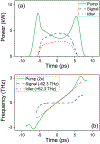

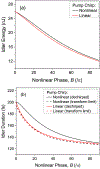

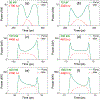


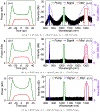
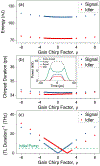





References
-
- Hofer R, Hofer M, Reider GA, Cernusca M, and Ober MH, “Modelocking of a Nd-fiber laser at 920 nm,” Opt. Commun 140, 242–244 (1997).
-
- Qian K, Wang H, Laroche M, and Hideur A, “Mode-locked Nd-doped fiber laser at 930 nm,” Opt. Lett 39, 267–270 (2014). - PubMed
-
- Daniel JMO, Simakov N, Tokurakawa M, Ibsen M, and Clarkson WA, “Ultra-short wavelength operation of a thulium fibre laser in the 1660–1750 nm wavelength band,” Opt. Express 23, 18269–18276 (2015). - PubMed
-
- Dianov EM, “Bismuth-doped optical fibers: a challenging active medium for near-IR lasers and optical amplifiers,” Light Sci. & Appl 1, e12 (2012).
Grants and funding
LinkOut - more resources
Full Text Sources
Other Literature Sources
